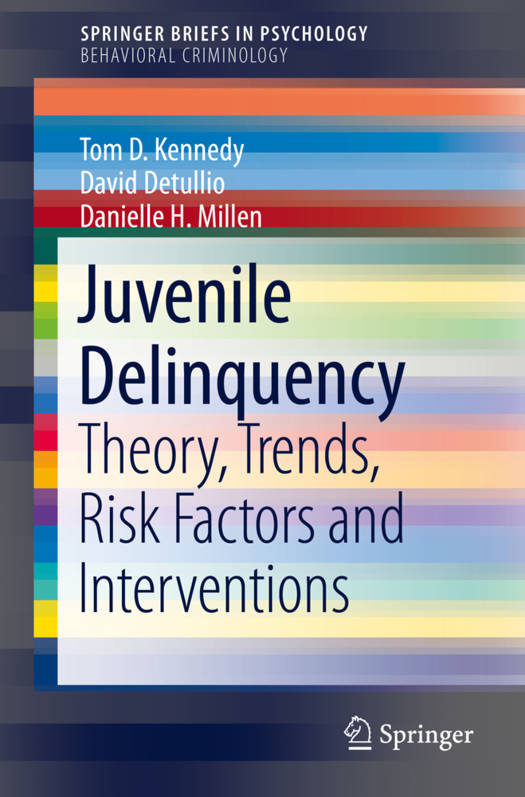
- Retrait gratuit dans votre magasin Club
- 7.000.000 titres dans notre catalogue
- Payer en toute sécurité
- Toujours un magasin près de chez vous
- Retrait gratuit dans votre magasin Club
- 7.000.0000 titres dans notre catalogue
- Payer en toute sécurité
- Toujours un magasin près de chez vous
Juvenile Delinquency
Theory, Trends, Risk Factors and Interventions
Tom D Kennedy, David Detullio, Danielle H MillenDescription
This brief explores the current theories, trends, risk factors, and intervention efforts related to juvenile crime. Although arrest rates for juveniles in the US have declined over the last two decades, the amount of severe crimes warrants increased examination as the US reports higher rates than most other developed countries. The authors examine individual, family, and environmental risk and protective factors for juvenile crime, while considering the need for better integration of treatment into critically at-risk areas of the community. Covering notable topics of interest for researchers and public policy makers alike, this brief provides an overview of factors and trends related to juvenile crime, aiming to support more effective, evidence-based treatment and prevention.
Spécifications
Parties prenantes
- Auteur(s) :
- Editeur:
Contenu
- Nombre de pages :
- 100
- Langue:
- Anglais
- Collection :
Caractéristiques
- EAN:
- 9783030382490
- Date de parution :
- 26-03-20
- Format:
- Livre broché
- Format numérique:
- Trade paperback (VS)
- Dimensions :
- 156 mm x 234 mm
- Poids :
- 172 g

Les avis
Nous publions uniquement les avis qui respectent les conditions requises. Consultez nos conditions pour les avis.






